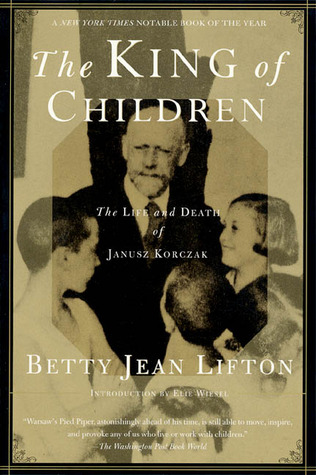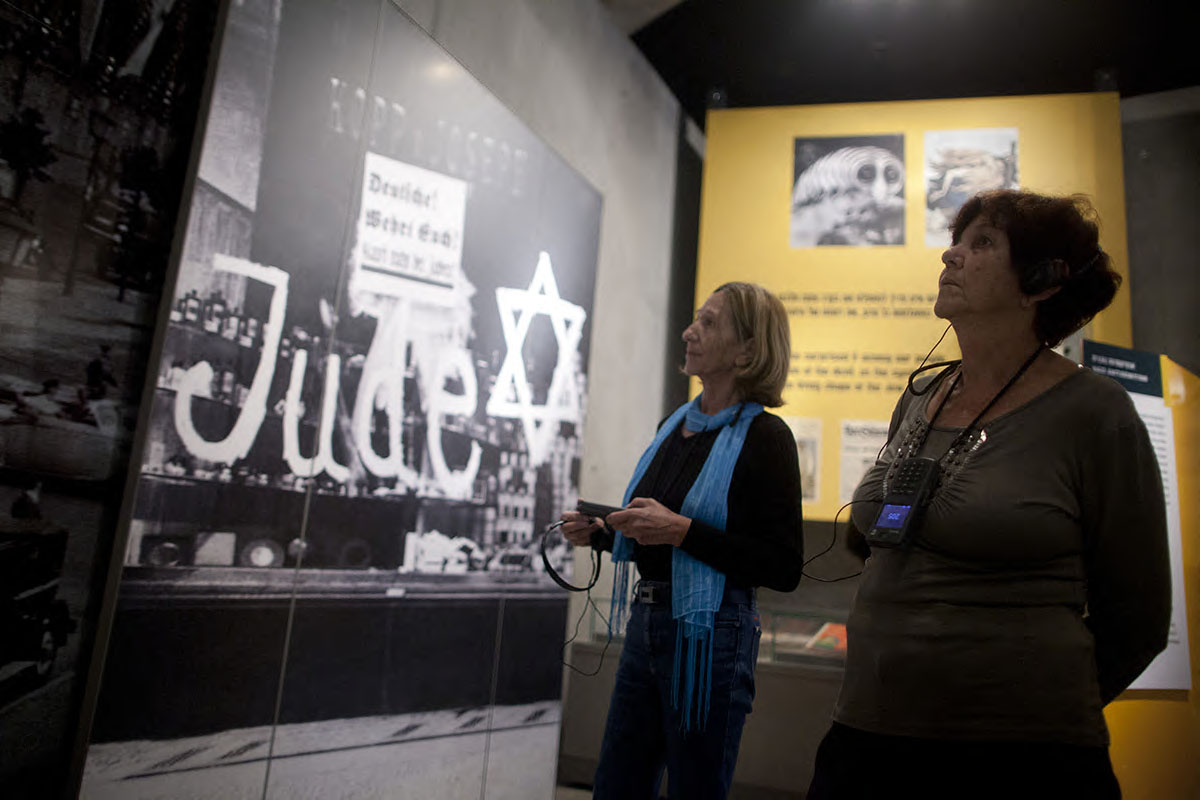
The King of Children – A Biography of Janusz Korczak
Sunday to Thursday: 09:00-17:00
Fridays and Holiday eves: 09:00-14:00
Yad Vashem is closed on Saturdays and all Jewish Holidays.
Entrance to the Holocaust History Museum is not permitted for children under the age of 10. Babies in strollers or carriers will not be permitted to enter.

The King of Children – A Biography of Janusz Korczak
The King of Children – A Biography of Janusz Korczak
Betty Jean Lifton
Farrar, Straus, and Giroux, 1988
353 pages
"Children are not future people, because they are people already... Children are people."
–Janusz Korczak
Putting down a lifetime's work with children in a few short lines is not possible. Here is a book which relates the story of a Polish Jewish doctor, writer, and educator who, in the last years of his life cared for two hundred orphans in the crowded orphanage, forced to move twice within the Warsaw Ghetto. Betty Jean Lifton has put together a moving and powerful biography of Janusz Korczak by interviewing surviving orphans and teachers from the orphanage in Warsaw, and by using his diary.
Born Henryk Goldszmit into a middle-class Polish Jewish family, Korczak is described as having a difficult and traumatic childhood. Lifton describes experiences in his life which contributed to the development of his ideas, thus leading him to become a writer, doctor, and eventually, a leading children's educator. She explains:
"There were few who knew that Henryk Goldszmit was leading a double life. The medical student lives dutifully at home with his widowed mother, but his other self, Janusz Korczak, the tortured writer, prowled through the roughest slums of the city alone in the company of Ludwik Licinski, a friend from the Flying University."
In 1911, Korczak traveled to London to visit an orphanage in Forest Hill. It was after this visit that he suddenly perceived his life as "disordered, lonely, and cold." He saw himself as a shabby stranger, alienated, and alone. And it came to him with sudden clarity that the son of a madman, "a slave who is a Polish Jew under Russian occupation," had no right to bring a child into the world.
Korczak met and befriended Stefania (Stefa) Wilczynska, known by all who knew her as Madame Stefa. Once the orphanage was completed in October, 1912, they moved in. Korczak was the director and Stefa his assistant. Was there a romantic involvement between the two? There is no conclusive evidence of this, though they were extremely dependent upon each other.
Korczak was drafted into the Russian army as a doctor during World War I, returned to the orphanage in 1918, and drafted again into the Polish-Soviet War of 1919. He used these events to increase his research into children, even visiting an orphanage in Kiev. He traveled to Palestine in 1934 and again in 1936, even contemplating making aliyah.
On his final return to the orphanage on Krochmalna Street, Korzcak was able to implement his educational ideas, using his methodology to educate the orphans to lead responsible lives and to be responsible for each other. He believed that children should be understood, that one should enter into the spirit of their world and psychology, but that, first and foremost, children must be respected and loved, treated as partners and friends.
The final chapters of Lifton's book describe the Nazi occupation of Warsaw. By the end of November, 1940, the Jews of Warsaw had to move behind the walls of the ghetto and Korczak had to move the orphanage into new premises, at 33 Chlodna Street, also situated in the ghetto. Offers to obtain false identity papers and save himself were refused.
Though Korczak never married and had no children of his own, he was father to 200 orphans when he, Stefa, and his beloved children took their dignified last march to the cattle cars standing at the Umslagplatz in Warsaw which took them to Treblinka, their final destination, where they all perished.
The books he wrote, especially the King Matt series, should be read by young people the world over. Teachers who want to make education useful and enjoyable for children should study his educational books.
Lifton has compiled Janusz Korchzak's uncompleted "Declaration of Children's Rights." Found at the end of the book, this can be used as an interesting lesson plan or discussion with students.
Korczak left us a valuable educational legacy from a bygone era, but as relevant today as it was then. Educators should use his legacy in the classroom.

Thank you for registering to receive information from Yad Vashem.
You will receive periodic updates regarding recent events, publications and new initiatives.

"The work of Yad Vashem is critical and necessary to remind the world of the consequences of hate"
Paul Daly
#GivingTuesday
Donate to Educate Against Hate


Worldwide antisemitism is on the rise.
At Yad Vashem, we strive to make the world a better place by combating antisemitism through teacher training, international lectures and workshops and online courses.
We need you to partner with us in this vital mission to #EducateAgainstHate
The good news:
The Yad Vashem website had recently undergone a major upgrade!
The less good news:
The page you are looking for has apparently been moved.
We are therefore redirecting you to what we hope will be a useful landing page.
For any questions/clarifications/problems, please contact: webmaster@yadvashem.org.il
Press the X button to continue



